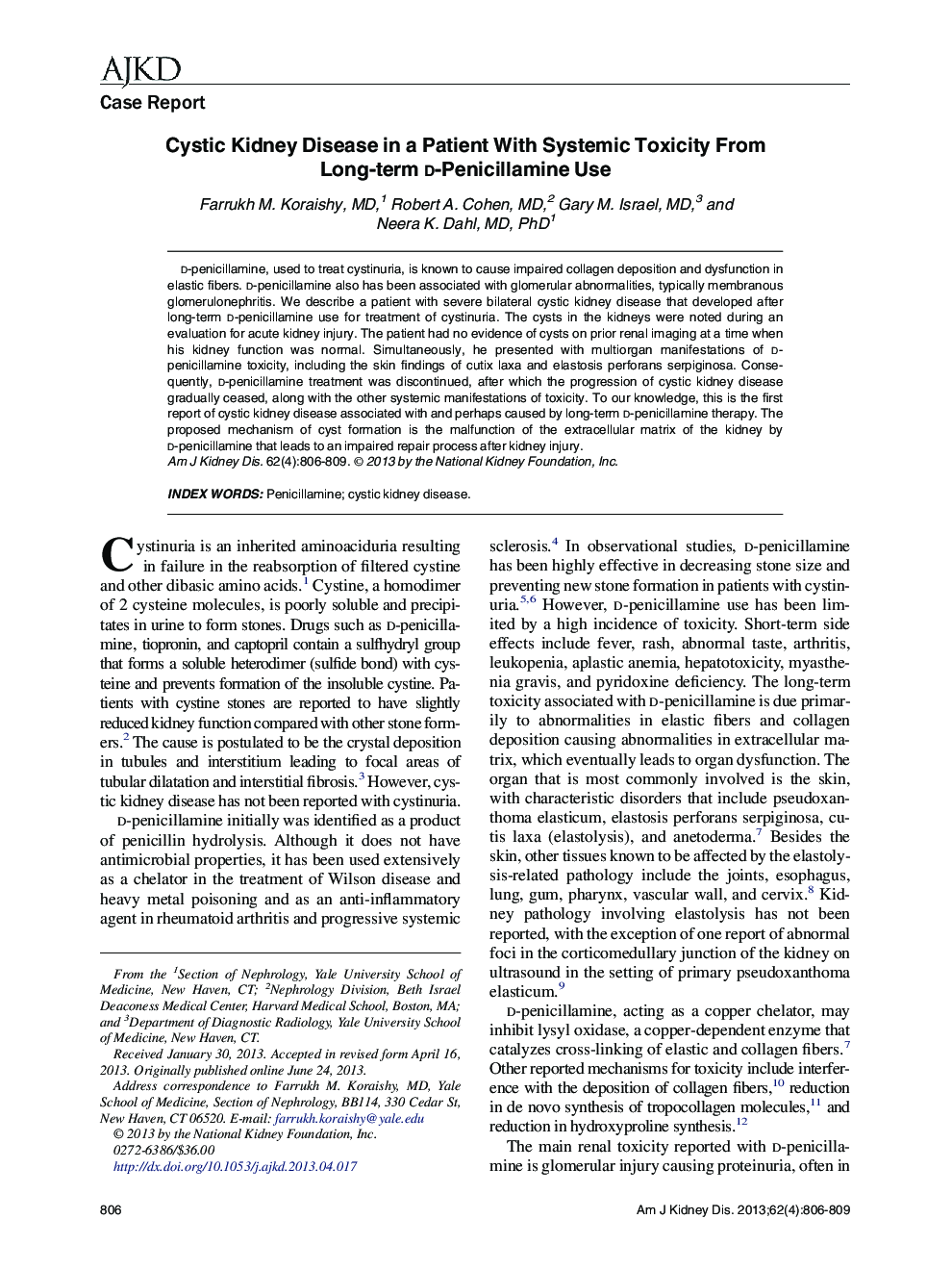| Article ID | Journal | Published Year | Pages | File Type |
|---|---|---|---|---|
| 3848288 | American Journal of Kidney Diseases | 2013 | 4 Pages |
Abstract
d-penicillamine, used to treat cystinuria, is known to cause impaired collagen deposition and dysfunction in elastic fibers. d-penicillamine also has been associated with glomerular abnormalities, typically membranous glomerulonephritis. We describe a patient with severe bilateral cystic kidney disease that developed after long-term d-penicillamine use for treatment of cystinuria. The cysts in the kidneys were noted during an evaluation for acute kidney injury. The patient had no evidence of cysts on prior renal imaging at a time when his kidney function was normal. Simultaneously, he presented with multiorgan manifestations of d-penicillamine toxicity, including the skin findings of cutix laxa and elastosis perforans serpiginosa. Consequently, d-penicillamine treatment was discontinued, after which the progression of cystic kidney disease gradually ceased, along with the other systemic manifestations of toxicity. To our knowledge, this is the first report of cystic kidney disease associated with and perhaps caused by long-term d-penicillamine therapy. The proposed mechanism of cyst formation is the malfunction of the extracellular matrix of the kidney by d-penicillamine that leads to an impaired repair process after kidney injury.
Keywords
Related Topics
Health Sciences
Medicine and Dentistry
Nephrology
Authors
Farrukh M. MD, Robert A. MD, Gary M. MD, Neera K. MD, PhD,
